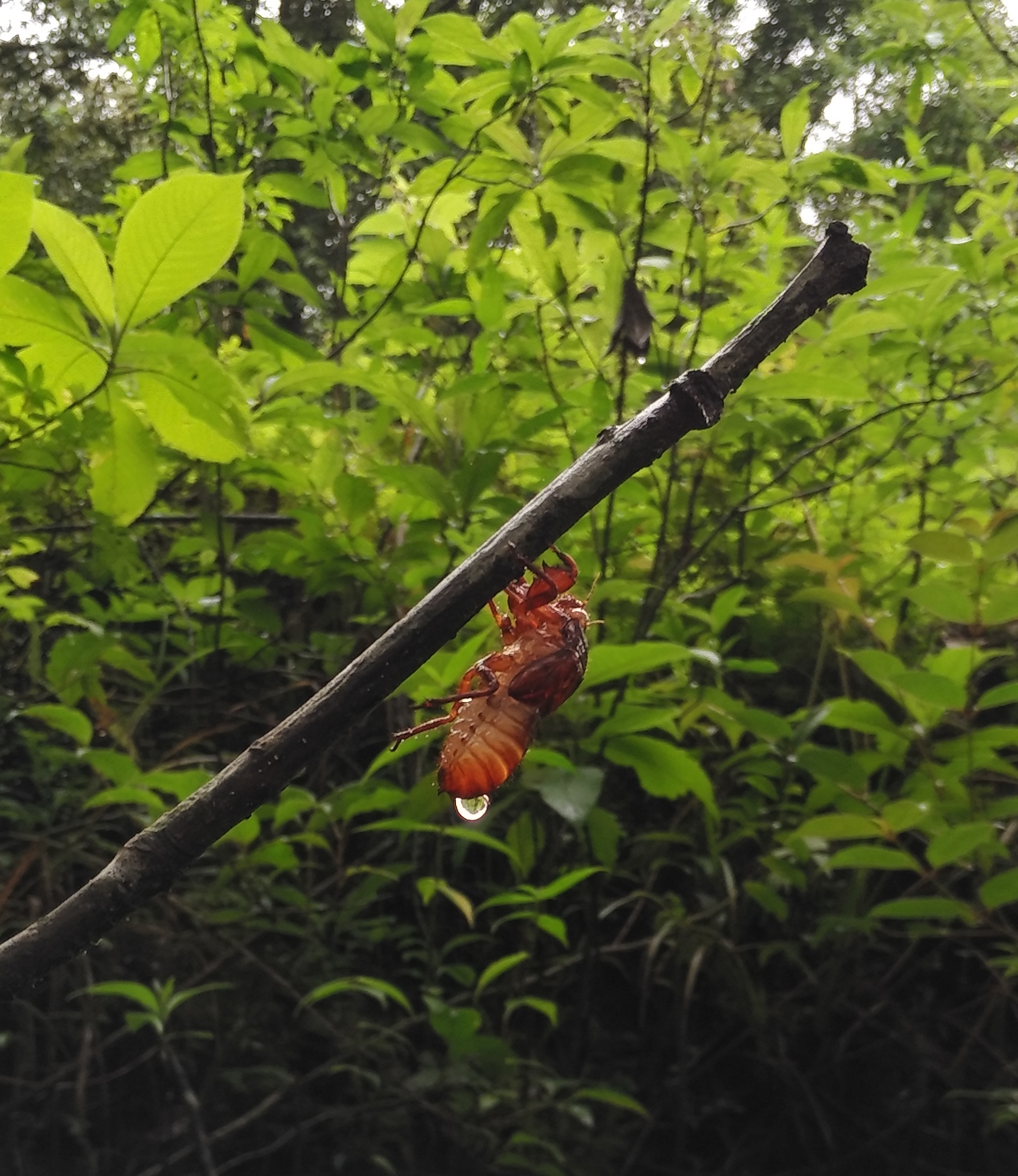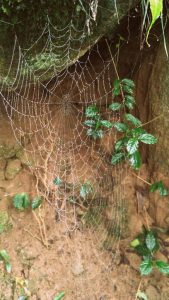Today was one of those kinda days when an encounter in the wilder realms of our forest garden leaves us enthralled and excited enough to be jumping around like a couple of school boys.
Emmanuel, who now holds the privilege of being the first volunteer at Take It Easy, and myself were walking down the trail towards the confluence where our small brook meets the larger river when we realised that the forest was strangely abuzz that day with the mating cries of a horde of Tzitzikas. They are commonly known as cicadas but we fancy the Grecian name more. Tzitzikas – say it aloud and see what the word does to your mouth. It is an onomatopoeic name (word derived from the source of the sound). We quite like the local name too – Jyawkiri.
There were thousands of them that had perched themselves on the bark of the trees and were perhaps celebrating the Tzitzika weddings en masse.
We were lucky to find one Mr. Tzitzika who, going by his plaintive cry, had not found his mate as yet but watch how brilliantly it is camouflaged in the tree.
Here are some pretty cool and interesting facts about tzitzikas sourced from Wikipedia and other reports online:
- Tzitzikas spend most of their life living underground as a nymph to suddenly emerge above ground one day to meet, mate, multiply and die after a few weeks. Here’s an incredible picture of the evolutionary life cycle of the tzitzika.
 After observing this picture it suddenly struck me that a month back we had encountered a strange episode of a batch of insects whose bodies were literally emptied out from their shells. We couldn’t really fathom what caused this strange phenomenon but now looking back and connecting the dots, we believe that these insects were nymphs who had just emerged from under ground before getting metamorphosed into a Tzitzika. Ah! the joy of foresting!
After observing this picture it suddenly struck me that a month back we had encountered a strange episode of a batch of insects whose bodies were literally emptied out from their shells. We couldn’t really fathom what caused this strange phenomenon but now looking back and connecting the dots, we believe that these insects were nymphs who had just emerged from under ground before getting metamorphosed into a Tzitzika. Ah! the joy of foresting!

- There are some 1300 species of tzizikas with the periodical cicadas or the Magicicadas, who mysteriously time their emergence above ground in prime numbers of 13 and 17 years, being one of the most interesting of the lot.
- Some tzizikas produce sounds up to 120 dB which is among the loudest of all insect-produced sounds. The song is loud enough to cause permanent hearing loss in humans should the tzitzika sing just outside the listener’s ear. In contrast, some small species have songs so high in pitch that the noise is inaudible to humans.
- The tzitzikas were eaten in ancient Greek and it is still considered a delicacy in some cultures in eastern Asia and Latin America. Shells of tzitzikas are also employed in traditional Chinese medicines.
- When the tzitzika finally end their lives (after the mating frenzy) and fall down on the ground, it’s bodies nourish the soil as it contains 10% Nitrogen.
Would you want to be woken up one warm morning by the Tzz.. of the Tzitzikas? Come Stay with Us! 🙂


